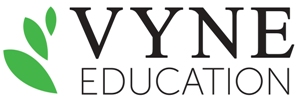Printer Friendly Copy
Master DSM-5's Key Changes, Implement Its Assessment Tools, and Make It Your Path to ICD-10-CM Compliance
VYNE

Format(s): Home-study
Discipline(s): Counseling / Social Work / Psychology
Contact Hours:
Registration Fee: $179
Objectives
1. Describe primary differences in DSM-5 that impact how mood and anxiety disorders are diagnosed.
2. Summarize changes made to the conceptualization and diagnosis of grief and trauma-related symptoms.
3. Define three psychological disorders appearing for the first time in DSM-5.
4. Explain three ways in which the DSM has been restructured.
5. Apply two DSM-5 assessment measures into your clinical work.
6. Support the transition to ICD-10-CM with knowledge of DSM-5 diagnostic coding
Target Audience
• Psychologists
• Psychiatrists
• Licensed Professional Counselors
• Marriage and Family Therapists
• Social Workers
• Psychiatric Nurse Practitioners
• Alcoholism and Drug Abuse Counselors
• School Counselors
• Pastoral Counselors
• Case Managers
Confirmation Notes
Receive unlimited access from the time of purchase through completion and submission of the online exam. Once the exam is taken the seminar will be available for 30 days before course access expires.
CE Information: Click on the "purchase" button for CEU details.
Description
Using DSM-5 as Your Partner to Improve Clinical Practice and Facilitate Reimbursement
Mental health professionals in 2014 are faced with the need to incorporate wide-ranging changes in diagnostic practices, the extent of which have not been seen in a generation. DSM-5, released in 2013, is still a new manual and is structurally quite different from DSM-IV. For example, DSM-5 methods better reflect the dimensionality of psychological symptoms, and five-axis diagnosis has been eliminated. Standardization of assessment across researchers and clinicians is encouraged via the inclusion of cross-cutting assessments. DSM-5 adds 15 new diagnoses, eliminates others, and revises criteria for many additional disorders. Furthermore, DSM-5 includes a vastly expanded and specific list of V-codes. As if mastering these changes was not enough, clinicians are simultaneously faced with the transition to ICD-10-CM coding on October 1, 2014.
This seminar provides you with the tools to skillfully navigate these transitions. Review key diagnostic changes, focusing on the most common adult diagnoses, and case vignettes illustrating changes in diagnostic coding from DSM-IV to DSM-5/ICD-10-CM. This course also introduces several new DSM-5 standardized assessment measures. Learn how to easily incorporate these into your practice and use them to improve treatment effectiveness. Insurers are increasingly likely to require standardized measures, so knowing which ones to use and how to incorporate them into treatment plans can help reduce the number of reimbursement objections that you and your clients encounter. Finally, the workshop demonstrates how a working knowledge of DSM-5 will ease the transition to ICD-10-CM.
Purchase Today
Provider does not currently list available courses on RehabEdge.